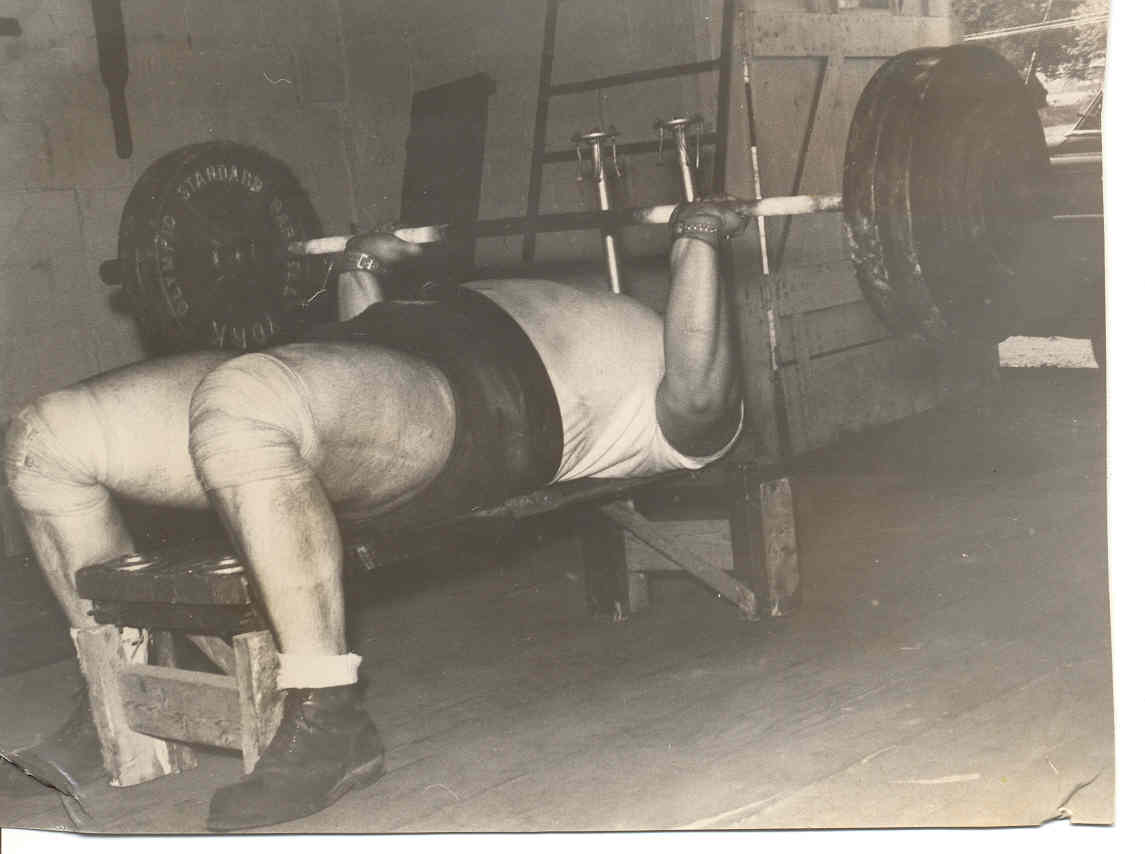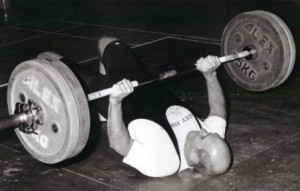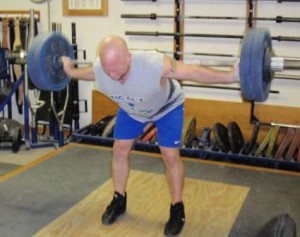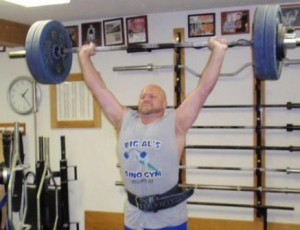Home Made Equipment
by Thom Van Vleck
In the early days of the Jackson Weightlifting Club there was a lot of Home Made equipment. My grandfather said that back in the 20’s, when he and his friends decided to lift weights they had “NO HOPE” of being able to afford real weights so they got scrap iron for the bars and poured cement in buckets to make weights. They also lifted whatever was handy! When my Uncles started lifting in the late 50’s, there was more equipment available, but they had the same old problem of being broke! So they made a lot of their own stuff and got by just fine. In the photo I’ve included with this story you will see my Uncle Wayne doing “press grip tricep presses” (basically, using the same grip he used for the Olympic Press and keeping his elbows in) on a bench that one of the JWC members made. If you look closely, the leg on the far left is actually split and it looks like it’s ready to blow!!!!
I recall when I first started training, about 1977, they were tearing a house down nearby. We went down and Wayne pulled out some old boards that weighed a ton (probably native oak). We pulled what seemed like hundreds of nails out and then my grandfather Dalton took to making an Incline for Presses. I’m pretty sure Evel Knievel could have used that thing to jump the Grand Canyon, it was that solid!!! I also recall getting a splinter or two using that thing and learning that if you do inclines with the uprights in front of you and you can’t lock out the bar….you will be trapped! Another thing that my Uncle’s made that I still have is a set of squat stands. The base is a truck wheel and the upright is a truck drive shaft. The “U joint” makes a nice, natural rest for the bar. When I first started in the Highland Games, I made a lot of homemade equipment.
I’m sure we all have stories like that. I have many more, too. But that’s not my point today. It’s about desire. I recall my grandfather telling a story about how when he was a kid there was a man that had a really fast horse and he treated the horse like gold, pampering it, giving it all the best grain, stalls, equipment and most importantly hired someone to train the horse. He then raced it against another horse that had none of these things but did have an owner that worked hands on with the horse. The day of the race, the horse that knew his owner and the owner’s desire to win, won over the horse who’s owner was a stranger to him. The message I got was that desire was the most important ingredient to winning.
I recall one day back in the 70’s a guy begged me to come and train at the old JWC. He showed up and it was winter and there was no heat in our gym. It was also dirty and full of home made equipment. I could tell he was put off by it all. He never came back and that was no great surprise to me. If he had the desire, he would have put up with what he had to in order to achieve his goal.
Today, I have a pretty nice gym. I have some pretty expensive equipment. But I still lift off those old squat stands from time to time to remember that story. To remember that if I have don’t have desire, all the fancy equipment in the world won’t save me when (as my Granddad used to say) “the shoe leather meets the road”. A little adversity is a good thing!



